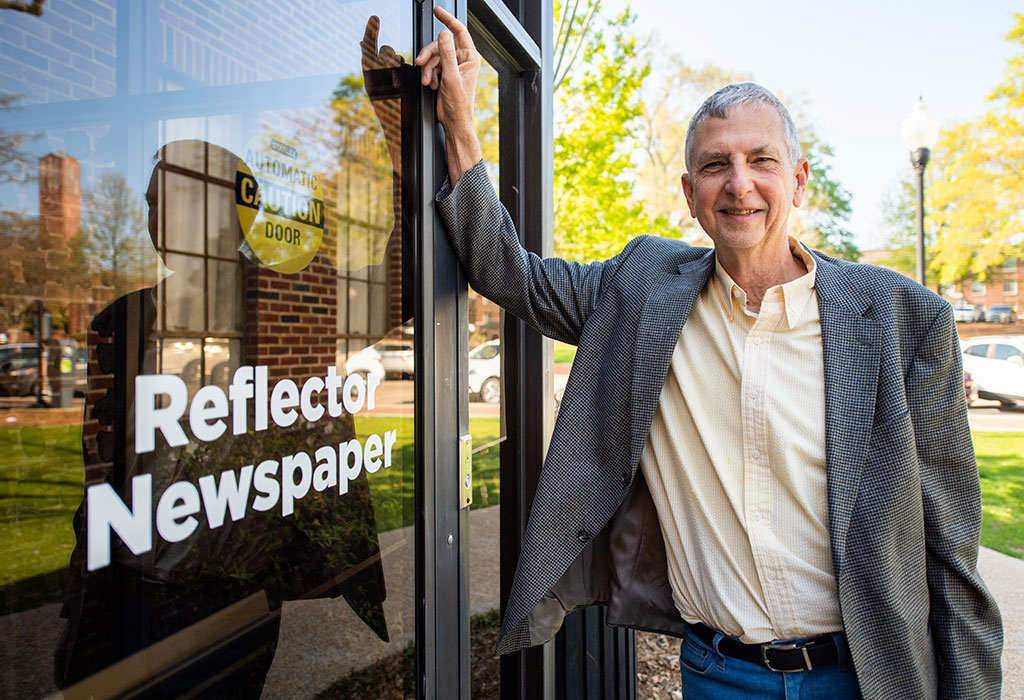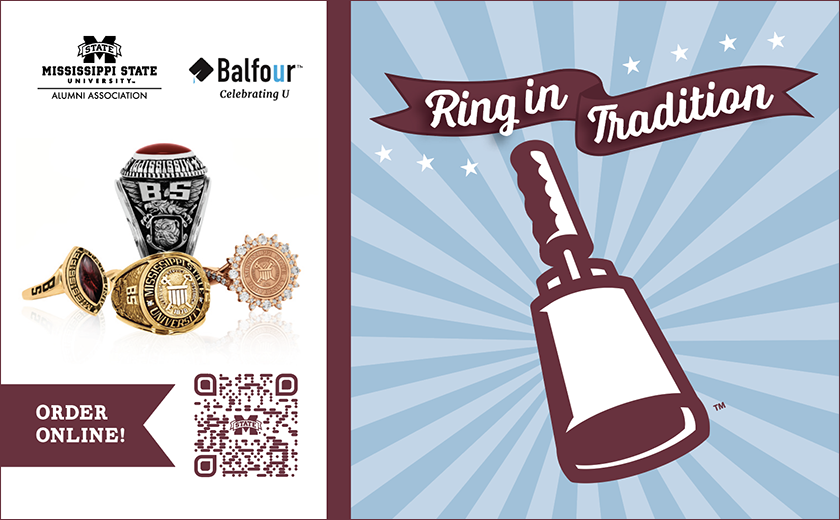Bailey’s 40-year journalism career spans typewriters and digital newsrooms
In 2018, journalist James Overstreet made an important phone call to an old coworker—one that would help cement the legitimacy of a new media outlet and set a baseline for its quality.
Overstreet was tasked with hiring journalists for the upstart Daily Memphian, the first broad attempt at establishing a digital-only news source for the Memphis, Tennessee, area. Creating a new source of news in a major metropolitan area with long-established traditional outlets—newspapers and TV and radio stations—wouldn’t be easy, but Overstreet focused on bringing in scribes who would give the organization instant credibility and a short learning curve.
At the top of his call list was veteran reporter and Mississippi State graduate Tom Bailey.
“Tom and people like him were what we needed to make this happen,” Overstreet said. “He was one of the most gifted writers and meticulous reporters I’ve ever worked with. His reputation inside and outside of journalism was so well known. Any assignment that needed great storytelling chops, he was the guy we would go to. I could give him any assignment and walk away knowing he’d get it in quick, clean and well written.”
Helping establish the Daily Memphian as a trusted, must-read news source for Midsouth residents proved to be the closing act in Bailey’s 44-year career, as the journalist retired in early 2022. In those four decades, Bailey saw—and covered—it all. From newsrooms transitioning from mechanical typewriters and carbon paper to their electronic variants and eventually computers, to the continued shrinking of print journalism staffs and the rise of media distrust, Bailey evolved with the industry and remained a trusted storyteller.
“I got into the business at the time of peak journalism, right after Watergate showed the power and importance of good reporting,” he said. “By the time I came up to the newsroom in Memphis, they had to shoehorn me into a desk. It was unbelievable—the pinnacle for newspaper influence and resources—but then the bubble popped, and the cuts came.
“When the call from the Memphian came—about joining an online-only, locally owned startup—it sounded exciting,” he continued. “We weren’t tethering ourselves to the old schools of thought and the old ways of doing things. I’m not sure where journalism is going to wind up. It’s always evolving, but it’s always going to be important.”
Bailey grew up in Tupelo with parents who were big consumers of news. He started his MSU career in 1974 as a pre-medicine major, but quickly switched to communication. He then began working at MSU’s student-led newspaper, The Reflector, where he met adviser, instructor and Starkville Daily News owner and editor Henry Meyer—a pillar of local journalism who advised student-journalists for three decades.
These experiences quickly cemented his interest in journalism.
“The main thing Meyer instilled in me was being a stickler for accuracy. He was legendary for taking that red grease pencil and marking up your printed assignments,” Bailey said.
He still recalls his first front-page Reflector story: Allegations were lobbed against a fraternity for improper care of the day’s Bully. His roommate was a member of the fraternity in question.
“A proper journalist would have said I can’t do that story because my roommate is directly involved. I didn’t do that. Instead, I made him mad as hell,” he said laughing about the experience. “I had both sides of the story, and they went with it. I still hear about it from him, even though we remain dear friends.”
Bailey’s college career also included a stint as chairman for the Committee of 82, a student group that lobbied lawmakers for support of MSU-related projects. One of the biggest projects the group rallied behind was the establishment of a state-of-the-art veterinary school.
“As a group, we drove down to Jackson one day to lobby at the Capitol. I’ll never forget sitting down with my state senator from Tupelo, the late Sen. Perrin Purvis,” Bailey said. “Before I could even get into my spiel, he interrupted me to save time. He took out his pen, drew a bullseye on a piece of paper and then drew an arrow sticking in the middle of it. His point: Save your breath, Tom; the deal is done. MSU will get the money.”
Bailey also was part of and briefly led the campus group of student radio broadcasters. Fellow Tupelo resident Jack Cristil, the Voice of the Bulldogs, once accepted an invitation to speak at a group monthly meeting.

“During the Q&A session, a student asked him for any career advice regarding radio. He basically said steer clear of the field,” Bailey recalled of the notoriously blunt Cristil.
Before graduating in 1980, Bailey’s journalism career moved from the collegiate to the professional ranks. He first joined Tupelo’s Northeast Mississippi Daily Journal in late 1977 after his publisher promised a schedule that would allow him to finish his degree. He joined the Memphis-based Commercial Appeal in 1979 as its Northeast Mississippi bureau reporter covering 10 counties. Bailey was eventually called up to the main newsroom in 1982 and worked for the Appeal until the launch of the Daily Memphian in 2018. Through those 44 years of service, he wore many hats, including copy editor, and worked a variety of beats, from religion and general assignment to business and economic development.
These roles allowed Bailey to meet people across the Southeast and share their individual and collective stories and experiences. He pointed to several career highlights, including meeting then-presidential candidate Jimmy Carter and interviewing noted consumer activist Ralph Nader for The Reflector; bringing facts to light that may have helped exonerate an adult babysitter charged with killing a child; and the years of business reporting that logged economic development and people’s investment into their communities.
“Journalism is arguably a form of art because it involves creation, and there’s something almost magical about creating,” Bailey said. “When an editor handed down an assignment, my immediate gut reaction was negative. Usually after the first phone call or two to a source, I started to own it.”
Bailey is now what many call a “recovering journalist”—those out of the industry who still look at the world through a reporter’s lens. He still calls his fellow editors and reporters with ideas and to talk shop from time to time, but Bailey said, “I suspect I’ll do that less as time goes on.”
Retirement affords Bailey an opportunity to have simple acts of expression he couldn’t as an objective journalist. For example, his wife Mary Powers—a fellow former journalist—put a political campaign sign in their yard for the first time this fall.
“There are certain things you had to deny yourself for years if you were going to do it right,” he said. “I am still slowly transitioning to where I can actually state my views. I feel like I’ll become a complete, regular, normal person sooner or later.”
While Bailey enjoys his retirement in Memphis, he said he plans to return to Starkville and Mississippi State as opportunities present themselves.
“I had an incredibly strong sense of place there. Whenever I’m back on campus, I have that warm and fuzzy feeling that I belong,” he said. “My years there were among the best years of my life, no doubt. Those experiences just get into your blood. That feeling of connectedness—it’s been a big pillar of my life over the years. In today’s world and in the political context, tribalism is a bad word, but Mississippi State is my tribe.”
By Carl Smith, Photos by Grace Cockrell






